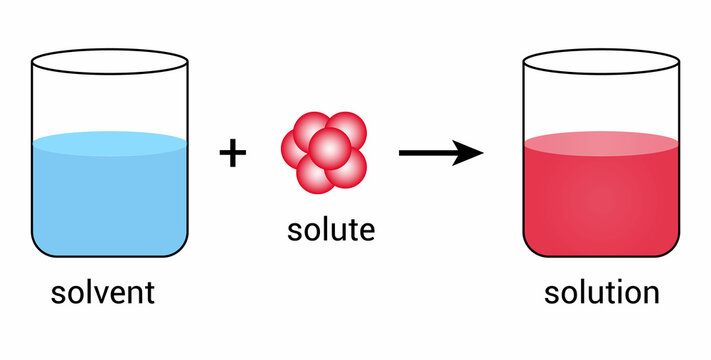“Mastering Solubility Rules: A Comprehensive Guide for AP Chemistry Success”
The realm of chemistry is a fascinating exploration into the behavior of matter, and within this realm, solubility rules stand as crucial principles governing the dissolution of substances. For students embarking on the Advanced Placement (AP) Chemistry journey, understanding and mastering solubility rules is a key to success. In this comprehensive guide, we will delve into the intricacies of solubility, explore the rules governing it, and provide strategies to conquer this essential aspect of AP Chemistry.
Navigating the intricacies of solubility rules is pivotal for success in AP Chemistry. This comprehensive guide unravels the complexities of solubility, emphasizing its significance in chemical temperature influences; students gain a thorough understanding of solubility patterns. Strategies such as mnemonic devices, regular practice, and leveraging online resources empower learners to commit solubility rules to memory effectively. Practical applications, like predicting precipitation reactions and crafting net ionic equations, showcase the real-world relevance of mastering solubility rules. Additionally, troubleshooting tips address common challenges, ensuring students grasp nuances and exceptions. By embracing this guide, aspiring AP Chemistry scholars embark on a journey to confidently navigate solubility principles, laying a solid foundation for success in the course and beyond.
https://quantabble.com/

Understanding Solubility:
Solubility refers to the ability of a substance (solute) to dissolve in another substance (solvent) to form a homogeneous solution. It is a fundamental concept in chemistry, influencing reactions, equilibrium, and the behavior of various compounds.
Understanding solubility is a cornerstone in the realm of chemistry, unraveling the mysteries of how substances interact and dissolve in solutions. At its core, solubility defines a substance’s capacity to seamlessly blend with a solvent, forming a homogeneous mixture. This concept extends beyond the laboratory, influencing chemical reactions, equilibrium, and the behavior of diverse compounds. Factors like temperature, pressure, and the nature of both solute and solvent contribute to the intricate dance of solubility. As students embark on their academic journey, a profound comprehension of solubility becomes the key to predicting reactions, formulating net ionic equations, and unraveling the complexities of chemical processes. This foundational understanding of solubility paves the way for success in the study of Advanced Placement (AP) Chemistry, offering a lens through which learners can explore the intricate dance of molecules in solution.
Factors Affecting Solubility:
Several factors influence a substance’s solubility, including temperature, pressure, and the nature of the solute and solvent. Understanding these factors is critical for forecasting and interpreting solubility trends.
-
Temperature
The solubility of a given solute in a given solvent is typically temperature dependent. Many solids dissolved in liquid water tend to increase in solubility as temperature rises. Water molecules vibrate faster as they heat up, allowing them to interact with and break apart the solute more effectively.
Solubility of various substances vs. temperature change: Most substances’ solubility increases with temperature; for example, more sugar dissolves in hot water than cold water. Gas solubility is inversely proportional to temperature; that is, as temperature rises, gas solubility decreases. In solubility vs. temperature chart, notice how solubility increases with increasing temperature for salts but decreases with increasing temperature for gases.
-
Pressure
Pressure has little effect on the solubility of solid and liquid solutes, but it has a significant effect on gaseous solutions. This is obvious when you open a soda can; the hissing sound is caused by the can’s contents being under pressure, ensuring that the soda remains carbonated. The takeaway here is that gas solubility tends to increase with pressure.
-
Polarity
The phrase “Like dissolves like” is commonly used to predict solubility. This statement indicates that a solute will dissolve best in a solvent with a similar chemical structure; a solvent’s ability to dissolve different compounds is primarily determined by its polarity. A polar solute, such as sugar, is very soluble in polar water, less so in moderately polar methanol, and practically insoluble in non-polar solvents like benzene. In contrast, a non-polar solute like naphthalene is insoluble in water, moderately soluble in methanol, and highly soluble in benzene.

Solubility Chart
The solubility chart displays the solubility of various salts. Alkali metal (and ammonium) salts, as well as nitrate and acetate, are always soluble. Carbonates, hydroxides, sulphates, phosphates, and heavy metal salts are typically insoluble.
Solubility Chart: The solubility of salts formed by cations on the left and anions on the top is classified as soluble (S), insoluble (I), or slightly soluble (sS).
Solubility Rules:
Introducing solubility rules marks the initiation into the fascinating world of chemical interactions. These rules serve as a fundamental guide in understanding the propensity of substances to dissolve in a solvent, laying the groundwork for success in chemistry studies. In this introductory exploration, we delve into the basic principles governing solubility, highlighting the key factors influencing whether a compound will form a homogeneous solution or remain insoluble. As students embark on their academic journey, grasping the essentials of solubility becomes pivotal, forming the basis for predicting reactions, crafting net ionic equations, and unraveling the complexities of chemical processes. This introduction sets the stage for a comprehensive understanding of solubility rules, providing a solid foundation for learners venturing into the captivating realm of AP Chemistry.
- Ionic Compounds: Most group 1 metal cations (Li⁺, Na⁺, K⁺, etc.) and ammonium (NH₄⁺) salts are soluble. Most nitrate (NO₃⁻) salts are soluble. Most chloride (Cl⁻), bromide (Br⁻), and iodide (I⁻) salts are soluble, except those with silver (Ag⁺), lead (Pb²⁺), or mercury(I) (Hg₂²⁺).
- Sulfate (SO₄²⁻) Compounds: Most sulfate salts are soluble, except those with calcium (Ca²⁺), strontium (Sr²⁺), barium (Ba²⁺), and lead (Pb²⁺).
- Carbonate (CO₃²⁻) and Phosphate (PO₄³⁻) Compounds: Most carbonate and phosphate salts are insoluble, except those with group 1 metal cautions and ammonium.
- Hydroxide (OH⁻) Compounds: Most hydroxide salts are only slightly soluble, except those with group 1 metal cations and ammonium. Exceptions include calcium (Ca²⁺), strontium (Sr²⁺), and barium (Ba²⁺).
- Sulfide (S²⁻) Compounds: Most sulfide salts are insoluble, except those with group 1 metal cations, ammonium, and some alkali metal sulfides
Applications in Chemical Reactions:
- Predicting Precipitation Reactions: Solubility rules are instrumental in predicting whether a precipitation reaction will occur when two aqueous solutions are mixed. Understanding which ions form insoluble compounds guides these predictions.
- Net Ionic Equations: Solubility rules aid in writing net ionic equations, allowing you to focus on the essential species involved in a reaction. This skill is crucial for mastering AP Chemistry.
- Identifying Spectator Ions: Understanding solubility rules helps identify spectator ions in a reaction, streamlining the process of writing balanced equations and simplifying reaction analyses.
Common Challenges and Troubleshooting:
1. Recognizing Exceptions:
Be vigilant about exceptions to the rules. Certain ions, such as silver (Ag⁺) and lead (Pb²⁺), have unique solubility behaviors that deviate from the general patterns.
2. Temperature Considerations:
Some solubility patterns change with temperature. For example, the solubility of gases generally decreases with increasing temperature.




